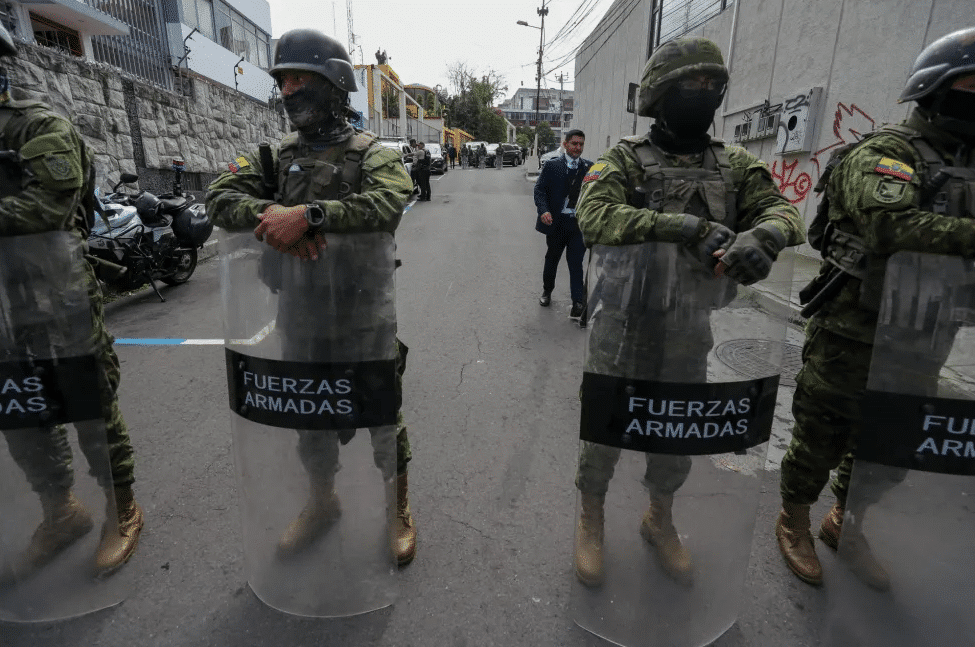30 de septiembre 2016

The Return of the Military

PUBLICIDAD 1M
PUBLICIDAD 4D
PUBLICIDAD 5D
Less than 2,200,939 hectares of forestland are left of the seven million hectares the country had in 1980.

The forest has lost many trees. The invaders cut them down to grow forage for cattle. Carlos Herrera/Confidencial
Nicaragua’s forest reserves have contracted alarmingly over the last 25 years. According to statistics from the “Forestry Strategy for Deforested Habitat” realized by MARENA, the Ministry of the Environment and Natural Resources, there were 7,225,300 hectares (17. 85 million acres) of forest in 1980. By 1990, the measure had shrunk to 6,314,300 hectares (15.6 million acres).
By 1995 there were only 5,566,900 hectares (13.75 million acres) left, and in 2000 the measure diminished to 2,395,523.64 hectares (5.9 million acres) of forestland.
“Later in 2011, MAGFOR, the Ministry of Agriculture and Forests, was charged with coordinating a National update: this registered the quantity of 2,200,939 hectares (5.44 million acres) of forestland,” stated Jurguen Antonio Guevara, head of extractive industries for the Humboldt Center.
Guevara explained that over 50% of the forestland has been lost in full view and tolerance of the governmental institutions and this presupposes a problem for the national water reserves.
“We know that the forest is related to the water supply; we can’t separate forest reserves from water reserves. When the forests disappear, principally from the watershed areas, the zones for hydrological renewal are affected. That alters the cycles of both the underground and surface waters and affects the rivers, and as a result the source of water for the communities,” repeats Guevara.
The expert adds that the loss of the forests also affects the wildlife, due to a change in the matrix of the ecosystem, which takes on an agricultural profile; this impacts the wildlife species, especially the medium size and larger mammals.
“If the current rhythm of degradation continues, according to data that we’ve confirmed with other governmental agencies, within 10 – 15 years we’ll have no forestland left at all. There are even some more alarming estimates that speak of only 7-8 years left if the current rhythm continues or accelerates,” finalized Guevara.
Cattle ranchers justify their actions
Alvaro Vargas, president of the Nicaraguan Federation of Ranchers’ Associations (FAGANIC), told Confidencial that he didn’t know who the ranchers were that were entering the Indio Maíz Biological Reserve in the southern part of Nicaragua to deforest and clear the land for extensive cattle raising.
In conversations with Confidencial, Vargas stated that cattle raising isn’t the only economic activity that’s damaging the forests of the reserve, since non-sustainable family farming, plus those who extract the precious woods, are also causing great damage to the environment.
Vargas assured that the problem of ranching is that it’s been extending horizontally, to the point where this activity is no longer profitable in the dry zone and now some 70% of the ranching is based in the Atlantic zones, most of it in areas of biological reserves.
“We’re not trying to justify ourselves, but we’re not the only guilty ones. If it’s true that cattle ranching is putting pressure on the protected areas, it’s doing so in full view and tolerance of the authorities,” Vargas declared, adding that the authorities should enforce the existing laws and impose sanctions on those who are using lands in the protected areas.
The president of the Federation of Ranchers’ Association accepted that cattle-raising practices were causing damage, not only in the Indiio Maíz Biological Reserve, but also in other zones where this economic activity has advanced uncontrollably, such as in Bosawás or Punta Gorda. Nevertheless, he explained that they’re working to promote projects for environmentally friendly cattle raising, where they take advantage of a silvopastoral system, which entails raising animals among trees on smaller extensions of land.
“We in FAGANIC oppose having cattle raising advance into protected areas, and for that reason we’re promoting care of the environment in our meetings. We’ve sought financing from international organizations for this project working on sustainable cattle raising, but that’s also the responsibility of the government financial system,” Vargas underlined.
“But could you sanction your members?”
“We can’t do that, because we’re not the authorities.”
“So, what can you do?”
“Raise awareness - from there on, there are other authorities that should protect the lands from the incursion of colonists. If we continue at the rate we’re going, this will become a desert.
“In addition to raising awareness, we’re going to denounce, at a trade union level, those unscrupulous producers that are going into the protected areas to grow forage. We don’t agree with that,” affirmed Vargas.
Government is silent
Two weeks ago, Confidencial entered into communication with MARENA, the Ministry of the Environment and Natural Resources, and with the National Army to request an interview explaining the role they’re playing in favor of the conservation of the Indio Maíz Biological Reserve.
In their first communication, we were asked to send an e-mail with a letter requesting the interview. Despite the fact that we complied with the procedure asked of us, we received no reply.
We also attempted to communicate with the mayors’ offices in the towns of Río San Juan, Bluefields, and El Castillo, but our calls received no response.
Archivado como:
PUBLICIDAD 3M
Periodista. Investiga temas de medio ambiente, corrupción y derechos humanos. Premio a la Excelencia Periodística Pedro Joaquín Chamorro, Premio de Innovación Periodística Connectas, y finalista del premio IPYS en el 2018.
PUBLICIDAD 3D